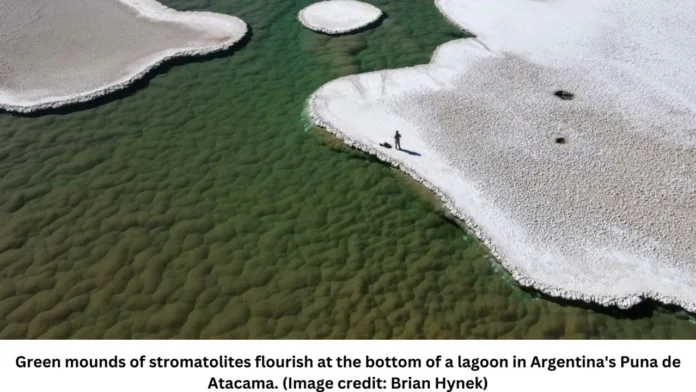Experts uncover prehistoric marvel beneath the surface of one of earth’s driest environments
The Earth continues to harbor mysteries, and Argentina’s Puna de Atacama has emerged as the stage for a remarkable revelation. Long overlooked by science, this high plateau desert, recognized for its extreme aridity, has concealed a hidden secret—a network of lagoons surrounded by salt plains.
Last year, Professor Brian Hynek, from the Laboratory for Atmospheric and Space Physics (LASP) and Department of Geological Sciences, in collaboration with microbiologist Maria Farías, stumbled upon this unexplored environment during an expedition to northwest Argentina. What began as a journey along a desolate dirt road, accompanied by a stay in a village with a meager population of 35 reliant on a single spring for water, culminated in an extraordinary find.
The duo, driven by the commitment to scientific exploration, navigated the challenging terrain, sinking at times “up to [their] knees in salt slush.” Their perseverance paid off as they uncovered 12 lagoons spanning over 25 acres, shrouded in one of the driest places on Earth.
Beneath the surface of these seemingly inhospitable waters, a stunning display of stromatolites—a complex microbial community forming rock mounds—captured the researchers’ attention. These stromatolites, resembling coral formations in a reef, offered a glimpse into ancient life on Earth, potentially echoing conditions from the early Achaean period 3.5 billion years ago.
“This lagoon could be one of the best modern examples of the earliest signs of life on Earth,” shared Professor Hynek. “It’s unlike anything I’ve ever seen or, really, like anything any scientist has ever seen.”
Intriguingly, the discovery goes beyond Earth’s history, as it holds the potential to inform our understanding of Mars. Professor Hynek theorizes that if life ever evolved on Mars, it might have left behind similar fossilized features.
“If life ever evolved on Mars to the level of fossils, it would have been like this,” Hynek explained. “Understanding these modern communities on Earth could inform us about what we should look for as we search for similar features in the Martian rocks.”
Describing the finding as “the biggest eureka moment,” Professor Hynek expressed amazement at the existence of undocumented phenomena on our planet. However, the lagoons face an uncertain future as a mining project for lithium has leased the area, threatening to alter the landscape forever.
As scientists prepare for further experiments to unravel the mysteries of this hidden ‘lost world,’ the clock is ticking, underscoring the urgency to preserve and study this extraordinary environment before it undergoes irreversible transformation.
